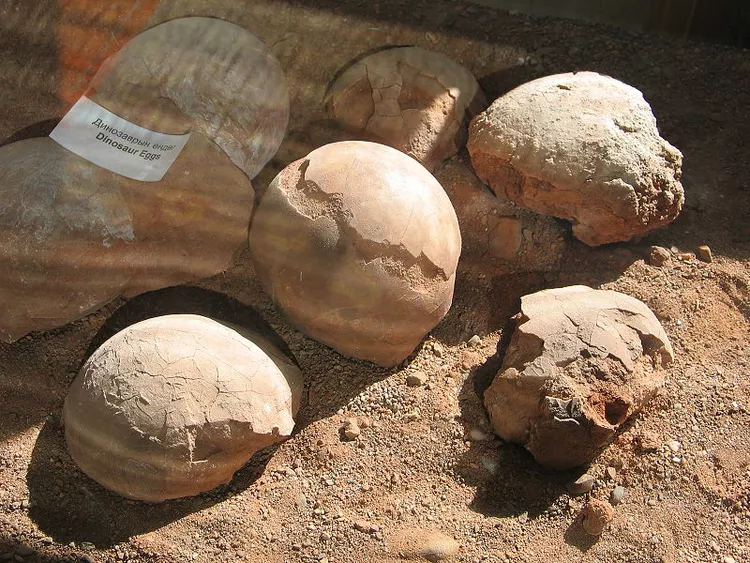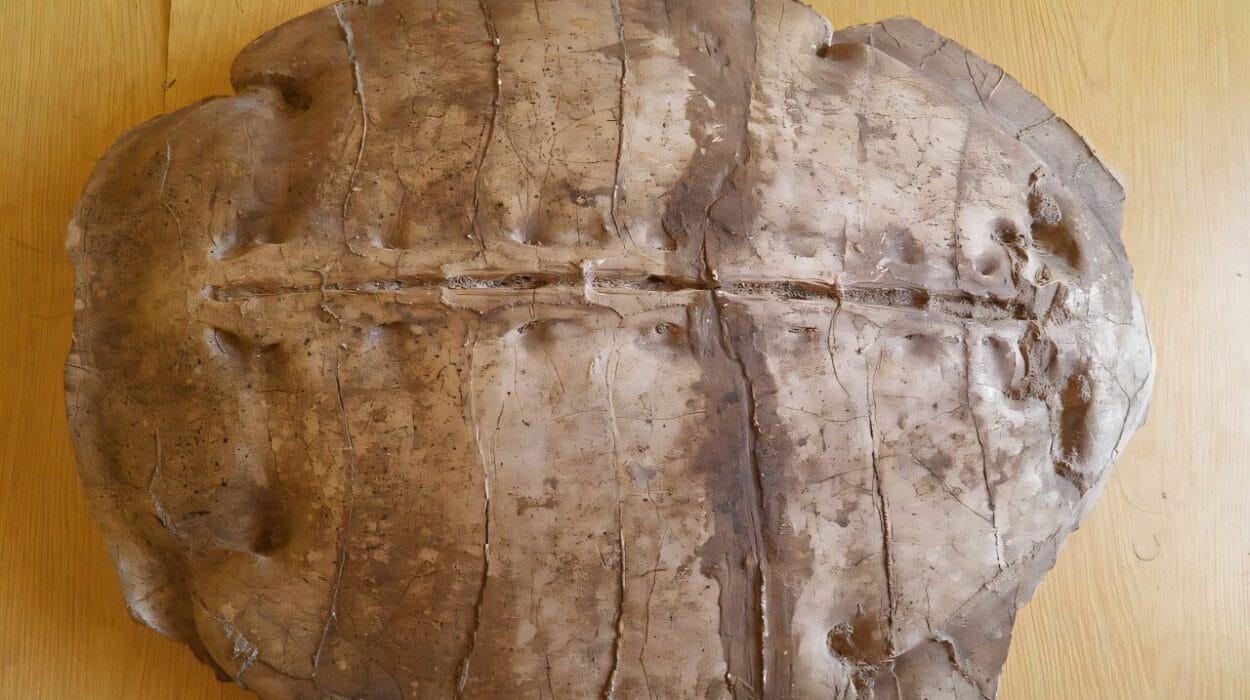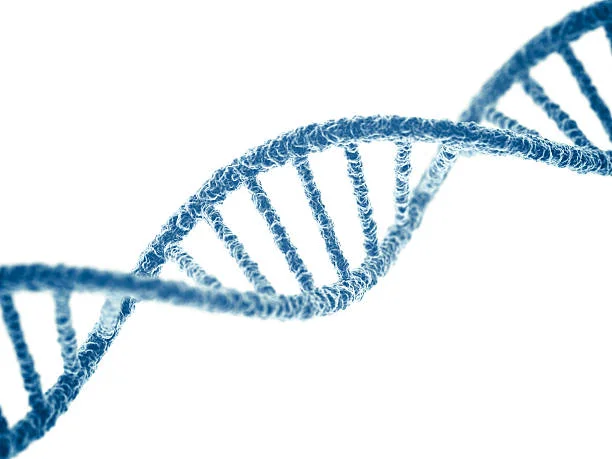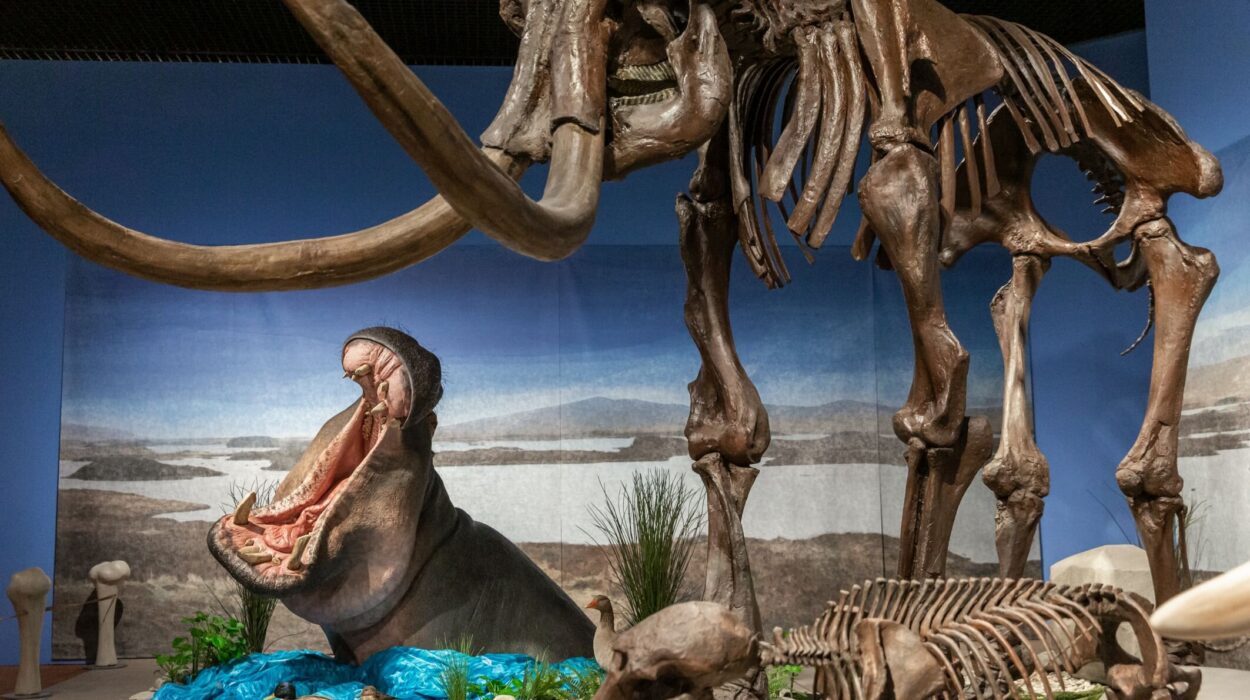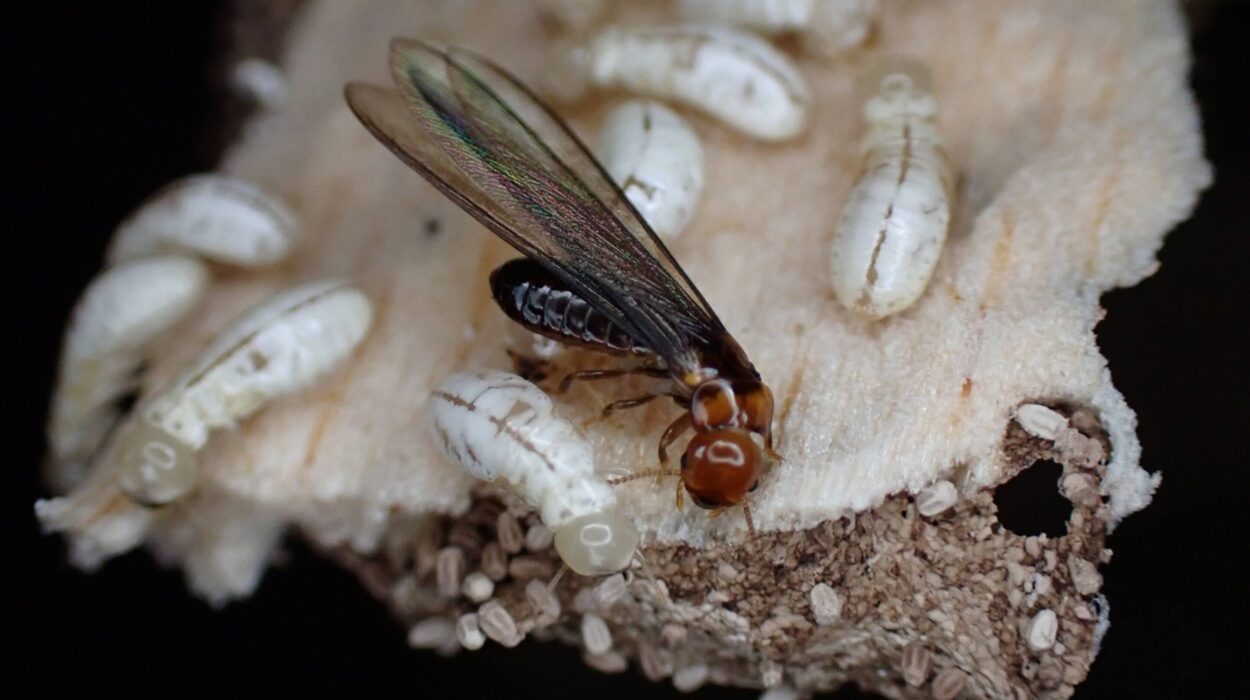Beneath layers of ancient stone, nestled in the hardened embrace of the Earth, lie some of the most captivating remnants of a time long gone: fossilized dinosaur eggs. These petrified capsules are more than just remnants of ancient biology; they are windows into the dawn of life as we know it—delicate, oval messages whispered from a past where giant reptiles thundered across primordial plains.
When we think of fossils, we often imagine bones: colossal teeth, curved claws, ribs the size of tree trunks. But the story of life is not written in bones alone. Dinosaur eggs, once fragile vessels of embryonic potential, have survived the ravages of time to offer paleontologists something more intimate than skeletal remains. They are the origin points—the beginning chapters in the lives of the great reptiles that once ruled Earth.
These eggs hold mysteries that still elude us. How did dinosaurs reproduce? Did they care for their young? What do their embryonic remains reveal about evolution, behavior, and extinction? For over a century, fossilized dinosaur eggs have both enchanted and confounded science. Their journey from discovery to interpretation is as complex and thrilling as the creatures they once contained.
First Discoveries: Echoes from the Earth
The story of fossilized dinosaur eggs begins not with certainty, but with confusion. In the 19th century, before dinosaurs became the icons of popular imagination, strange round stones were unearthed across the globe. From the Gobi Desert to the foothills of France, these objects were initially misidentified as anything from fossilized turtle shells to odd mineral formations.
It wasn’t until the 1920s that the truth began to crystallize. In the harsh, unforgiving deserts of Mongolia, an expedition led by Roy Chapman Andrews of the American Museum of Natural History made a stunning discovery: nests of eggs in the Flaming Cliffs of the Gobi. These were not ordinary eggs. Their size, distribution, and arrangement in circular nests suggested an origin that was both biological and reptilian. More importantly, they were prehistoric.
At the time, Andrews believed the eggs belonged to the ceratopsian Protoceratops, a common dinosaur found in the same strata. But decades later, closer scrutiny revealed they were more likely from Oviraptor—a theropod dinosaur. Ironically, “Oviraptor” means “egg thief,” a name based on the mistaken belief that the animal was stealing eggs, not laying them.
This misinterpretation would become a theme in the study of dinosaur eggs: assumptions made from fragmentary evidence, later overturned by better science. Fossilized eggs would teach us not only about dinosaurs but also about the limits of our knowledge and the importance of humility in science.
Fossilization: A Battle Against Time
An egg is fragile by design—a thin, permeable shell nurturing the most vulnerable form of life. That such delicate objects could survive for millions of years seems almost miraculous. But fossilization, though rare for eggs, is not impossible. It requires a precise and unforgiving alchemy of conditions.
For an egg to fossilize, it must be quickly buried—by sediment, volcanic ash, or even a mudslide. The faster it is covered, the greater the chance it avoids scavengers, rot, and weather. Over time, mineral-rich water seeps through the encased eggshell, replacing the organic material cell by cell. What results is a stone cast of the original egg—sometimes hollow, sometimes filled with crystalline minerals, and occasionally preserving the embryo within.
Not all fossilized eggs contain embryos, but when they do, the discovery is electrifying. Inside those tiny bones and vertebrae are clues about growth rates, species development, and even evolutionary traits that connect dinosaurs to modern birds.
Cracking the Shell: What Eggs Reveal
The shape, size, texture, and composition of fossilized eggs can tell us more than we might think. Some eggs are round, others elongated. Some have smooth shells, others are covered in pores or ridges. These physical attributes aren’t just decorative—they reflect evolutionary adaptations to environmental conditions and reproductive strategies.
For instance, porous eggs suggest that the embryo developed in a nest that required oxygen exchange, much like modern bird eggs. The number of pores, their arrangement, and shell thickness can indicate whether the eggs were buried or exposed, if they were incubated with body heat, or left to be warmed by the sun.
One of the most fascinating revelations from fossilized eggs is the insight they provide into dinosaur parenting. Fossilized nests with eggs arranged in orderly circles suggest that at least some species carefully tended their broods. Some Oviraptor fossils have been found lying atop nests, seemingly guarding or incubating them. This behavior, once thought uniquely avian, now appears to have deep roots in the dinosaur lineage.
Embryonic fossils—the rarest and most precious kind—offer even more profound insights. These mini-dinosaurs, curled in fetal positions within their fossilized cocoons, allow scientists to study bone development, muscle attachments, and even traces of feathers. One extraordinary specimen discovered in China preserved an embryo in a bird-like posture, head tucked under its arm—an evolutionary trait seen in modern birds just before hatching.
Dinosaur Reproduction: Beyond the Egg
Understanding dinosaur eggs forces us to confront deeper questions: How did dinosaurs mate? How many eggs did they lay? Did they return to the same nesting grounds year after year?
Like modern reptiles and birds, dinosaurs likely had cloacas—single openings used for excretion and reproduction. Mating postures are still speculative, but some paleontologists propose that tail flexibility and limb positioning were critical in large species. The sheer mechanics of mating for animals like the towering sauropods are still debated, though some researchers believe these giants relied on complex behavioral rituals rather than brute force.
Fossilized egg clutches vary widely in size. Some species laid just a few, others dozens. Certain hadrosaurs—the “duck-billed” dinosaurs—created massive nesting colonies reminiscent of penguin rookeries. These nesting grounds stretch across fossil sites in North America and Asia, suggesting a level of social behavior that challenges old notions of dinosaurs as cold, solitary beasts.
Some fossils even suggest synchronized hatching, where all eggs in a nest hatch around the same time—a behavior seen in crocodiles and birds, possibly triggered by vocalizations from within the eggs. The idea of baby dinosaurs chirping to one another in utero is not science fiction—it’s a theory grounded in modern zoology and fossil evidence.
Global Footprints: Where Dinosaur Eggs Are Found
Fossilized dinosaur eggs have been discovered on every continent, including Antarctica. The global distribution reflects not only the vast geographic range of dinosaurs but also the diversity of environments they adapted to.
In India’s Lameta Formation, vast stretches of fossilized nests belonging to titanosaurs—giant long-necked dinosaurs—have been unearthed. These nests suggest colonial nesting behavior, with hundreds of eggs clustered in close proximity. The same behavior has been found in Patagonia and Montana.
China’s fossil beds have yielded some of the most complete and delicate eggs, often with embryos intact. The Jehol Biota, in particular, has produced spectacular finds that connect dinosaurs directly to birds, including feathered theropods with eggs preserved mid-laying.
Europe, too, boasts remarkable egg sites, especially in France and Spain. These discoveries have helped scientists understand the migration and diversification of dinosaur species across ancient land bridges.
What Dinosaur Eggs Don’t Tell Us
For all their wonder, fossilized eggs also come with mysteries. They rarely provide clear-cut species identification. Most eggs are classified into “oospecies”—a naming convention separate from skeletal taxonomy because it’s so hard to match eggs with specific dinosaurs unless embryos are present.
Egg color, for example, has only recently begun to be understood. Some eggs contain remnants of pigments, suggesting that, like birds, dinosaur eggs came in blues, greens, and browns—potentially for camouflage or species recognition. Yet much remains unknown.
Even more elusive is how many young actually survived to adulthood. The fossil record is skewed toward hard parts and dramatic deaths. We find far more eggs and bones than we do transitional stages of life. Did most hatchlings perish early? Was parenting the exception or the rule among dinosaurs? These questions linger in the gaps of the fossil record, challenging scientists to piece together incomplete puzzles.
From Fossil to Museum: The Art and Science of Preservation
Fossilized eggs, once excavated, require delicate handling. Unlike bones, which often have some internal reinforcement, eggshells can crumble under pressure. Conservators use resin, plaster, and other stabilizers to keep the structures intact during transport and study.
Advanced imaging techniques have transformed the way we study eggs. X-ray microtomography, CT scans, and synchrotron radiation can peer inside without breaking the shell. These non-invasive tools have revealed embryonic postures, bone structures, and even potential DNA fragments, although true genetic material remains elusive due to degradation over millions of years.
The preparation of fossilized eggs for public display is both a science and an art. Behind every glass case in a museum lies months or years of meticulous cleaning, analysis, and preservation. But what the public sees is just the beginning. For paleontologists, each egg is an open question—a silent relic waiting to be heard.
The Bird Connection: Eggs as Evolutionary Bridges
Perhaps the most thrilling insight from fossilized dinosaur eggs is their direct link to birds. The shape of the eggs, the structure of the nests, the presence of feathers in some nesting adults—all point to a lineage that didn’t end in extinction but in evolution.
Birds are not just distant relatives of dinosaurs—they are dinosaurs. Specifically, they descend from theropods, the same group that includes Velociraptor and T. rex. The eggs of ancient theropods bear striking resemblances to those of modern birds, down to the microstructure of the shell.
This connection blurs the line between ancient and modern. When you see a robin tending its nest or a goose shielding its goslings, you’re witnessing behaviors with roots in the Mesozoic era. The fossilized dinosaur egg, once thought to be an odd curiosity, is now one of the most powerful pieces of evidence in the evolutionary narrative.
A Future in the Past
As paleontology advances, new discoveries continue to reshape our understanding of dinosaur reproduction. Fossilized soft tissues, rare pigment traces, and better dating methods are pushing the boundaries of what fossilized eggs can tell us.
The next revolution may come from molecular paleontology—the hunt for preserved proteins, lipids, or even genetic material. Though controversial and technically daunting, some researchers believe that deeper insights into ancient biology may one day emerge from within fossilized embryos.
For now, the eggs remain as they have been for millions of years: hauntingly silent, paradoxically fragile and enduring. Each one is a question, a promise, and a story untold.
In the Shadow of Giants
Fossilized dinosaur eggs are not merely objects of scientific curiosity—they are relics of hope. Each one speaks of life’s perseverance in the face of unimaginable odds. They remind us that every great creature once began as something small and defenseless, curled in the dark, dreaming of the world beyond the shell.
In these ancient eggs, the past whispers its secrets. And if we listen closely—with patience, precision, and wonder—we may one day hear the heartbeat of a dinosaur, echoing across time.
